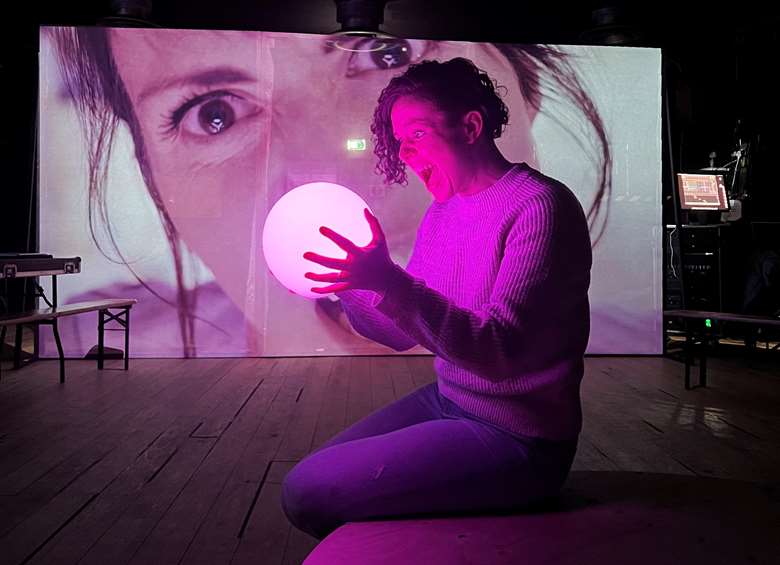Dominic Kimberlin on The Opera Story’s new hybrid opera
Dominic Kimberlin
Thursday, March 31, 2022
Dominic Kimberlin, lead librettist for The Opera Story’s Beauty and the Seven Beasts, discusses how this project uses digital characterisation to overcome the challenges facing post-COVID projects.

The challenges of producing performing arts in a post-Covid environment are manifold. When our artistic director, Hamish Mackay, approached us with his idea for a new contemporary opera, it was unclear what restrictions might be in place at the time of production. It was crucial for this project to be future proofed against any potential disruption such as physical distancing requirements or other safety measures. Through our efforts to adapt to these conditions, we found some innovative solutions that shaped the piece in unexpected ways.
The premise for the opera was Beauty and the Beast crossed with The Seven Deadly Sins: Beauty would meet seven Beasts who each represented a different sin. As we explored the possible scenarios for those meetings to take place, we had to consider that a live production with eight performers on stage might not be viable. This is how we came to the idea of a fairy-tale world in which a dating service connects singles through the use of magic mirrors. This concept felt particularly relevant to our current audience as so many of our social interactions are now conducted through the use of screens. As the seven Beasts would appear to Beauty onscreen, their parts could be pre-recorded, and so only Beauty’s presence would be required during the live performance.
Another important factor in the project’s creation was its capacity to support a wide range of artists. In 2020, The Opera Story created a series entitled Episodes, consisting of various short pieces that were centred around the pandemic. This project included around forty composers, librettists, singers and musicians, and was produced and filmed in lockdown conditions. Episodes helped to support many artists, myself included, at a time when it was particularly difficult to keep working, and encouraged a creative approach to the limitations posed by the pandemic. Beauty and the Seven Beasts is born out of the same desire to sustain the world of performing arts and as a consequence, it was decided that each of the seven dates would be written by seven different pairs of composer and librettist.
Through our efforts to adapt to post-Covid conditions, we found innovative solutions that shaped the piece in unexpected ways.
This decision had some intriguing consequences. To begin, we would need to ensure the cohesion of the story by having an established narrative that underpinned each of the dates. Vahan Salorian and I, as lead composer and librettist, would be writing the prologue, various interludes between the different dates, the seventh and final date ‘Pride’, and the epilogue. This allowed for each date to work as a self-contained piece with its own tonal voice and expression, whilst still fitting together as part of a complete arc. The premises for the dates were simple, yet the resulting scenarios are rich and diverse, transforming the project into something greater than the sum of its parts.
It was also important to ensure that Beauty would be consistent as a character throughout the entire opera. We developed a character outline to illustrate her personality and ambitions, and this was elaborated on as the project grew. Over the course of the piece, Beauty reveals more of herself as she engages with each of the sins, reflecting how her character solidified through the collaborative process. Just as we are each defined through how we interact with others, so too is Beauty. She acts as a thread which runs through each segment, binding the entire project together.
On Beauty’s journey to find true love, she is guided by one of the magic mirror’s many matchmakers. In an earlier version of the opera, the magic mirror was controlled by a kind of artificial intelligence which determined which people might be suitable together, rather like a dating algorithm. Over time, this role was transformed into a fully formed character who works in something like a call centre and is responsible for ensuring that Beauty finds a soulmate within seven dates. This character has their own history and motivations, and their relationship with Beauty is crucial to how the story resolves.
As every other character appears onscreen, only two singers are required for the live performance which helps alleviate some of the potential disruptions that might emerge. Each of the dates is pre-recorded, allowing for a greater degree of creativity in their presentation, and the editing and production styles reflect the unique traits of each sin. As with any multimedia performance, a remarkable amount of work has gone into preparation and rehearsals to ensure their seamless integration, and that the entire piece functions as a complete and cohesive work of art.
Through the exceptional efforts of the whole production team, the obstacles posed by the pandemic have been not only overcome, but have transformed into the features which make this production unique. It has been a delight to be part of this opera from the beginning and to witness what is possible through the magic of collaborative creation.
Tickets for Beauty and the Seven Beasts at Brixton Jamm on April 6, 7, 10, 12, 13 and 14, at 7pm can be purchased here.